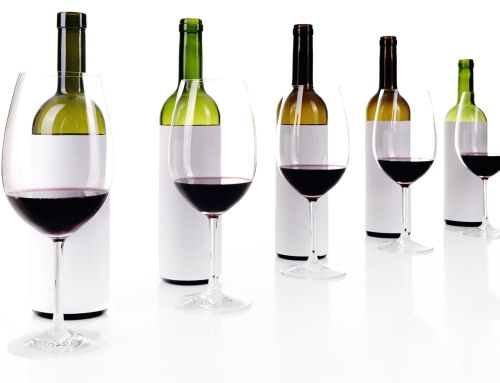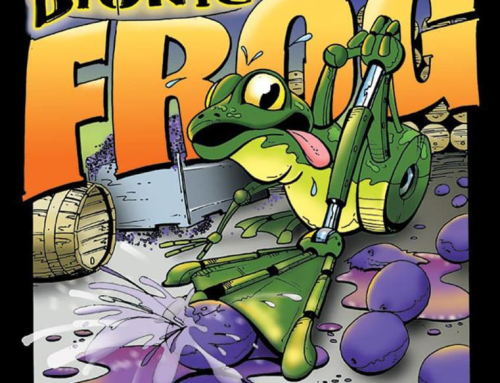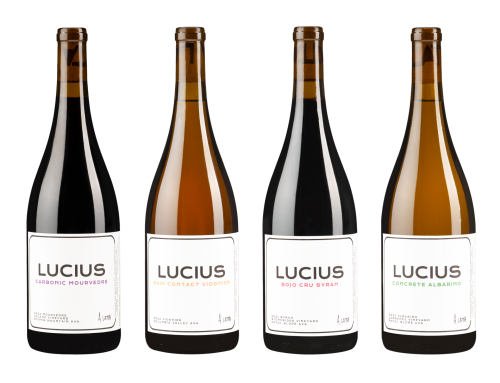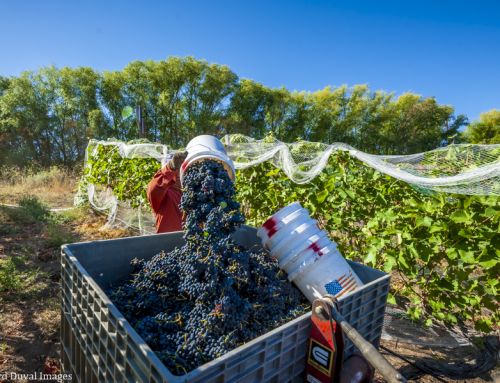
Stoller Family Estate vice president of winemaking Melissa Burr first became interested in working with old vine fruit when her mother-in-law purchased a piece of property in the Columbia Gorge. The land had a 12-acre vineyard, including Pinot Noir vines planted in the late 1960s. The vineyard, which has been alternately referred to as Mont Elise, Atavus, and Dragonfly, sits 1,800 feet above sea level – quite high by Pacific Northwest standards.
“I was really intrigued by it,” Burr says.
However, it wasn’t until Great Northwest Wine writer Andy Perdue encouraged Burr to look at other old vine sites that the project took shape.
“He was one of the people talking about [Monte Elise] when I was first getting going,” Burr says. “He really inspired me.”
Instead of simply working with Mont Elise fruit, Burr decided to seek out old vine plantings throughout the Pacific Northwest. Perdue connected her with the owners of Otis Vineyard, which had Cabernet Sauvignon vines planted in 1957 – the oldest Cabernet in Washington. She soon added Muscat of Alexandria planted in 1917 at Upland Vineyard – the oldest vines in the state.
“It was about trying to work with growers who have these historic vineyards, just out of curiosity and out of preservation of these vines,” Burr says of the idea to start an old vine focused winery.
For the project, Burr partnered with Stoller Wine Group owner Bill Stoller. However, when Burr and Stoller president Gary Mortensen set about searching for a name for the brand, most they considered were already taken.
“[Mortensen] was getting so frustrated. ‘I just want something that’s says ‘history,’ that says the word,’” Burr recalls. Miraculously, the word ‘history’ itself was not trademarked.
Over time, Burr added a Zinfandel from a vineyard in The Dalles, Oregon, planted in the late 1800s that are the oldest vines in the Pacific Northwest. She’s also worked with Windrow Vineyard Cabernet planted in 1981 – the oldest Cabernet in Walla Walla Valley. There’s also old vine Pinot Noir from Willamette Valley, Merlot from Canoe Ridge, and Cabernet Franc from Red Willow.
In 2017, the winery added a red blend, made from a combination of old vine sites and Washington vineyards Burr thinks are exciting.
“[The red blend] really satisfies a need, and the quality for value in Washington is phenomenal,” Burr says.
The History wines are sold on-line, through a wine club, and through Stoller’s tasting rooms in Dayton and Bend, Oregon.
While one of Burr’s goals with History is to work with the same sites over time, that is not always possible. As with all things, eventually these vines truly do become history. The 1957 Cabernet vines at Otis Vineyard were subsequently replanted once the vines were no longer productive. The 1917 Muscat plantings also met their demise.
“Just because of the nature of how things work, I’ve had sites come and go,” Burr says.
She also notes that while old vine sites are often revered, older doesn’t always mean better. Eventually, vines need to be replanted.
“Old vine doesn’t always mean top quality,” Burr says. “You can’t just hang onto the vines just because they’re old.”
But for those vines that still do produce high quality fruit, the results can reveal something magical, as History proves.
“I truly do think that these old vines make really special, complex wine,” Burr says.
History 2016 Mont Elise Vineyard Gewürztraminer Columbia Gorge $30 92 points
History 2017 The Pines Vineyard Zinfandel Columbia Valley (OR) $65 92 points
History 2017 Red Blend Columbia Valley $40 92 points
History 2017 Windrow Vineyard Cabernet Sauvignon Walla Walla Valley (OR) $75 91 points
Images courtesy of Stoller Family Estate.








Leave A Comment